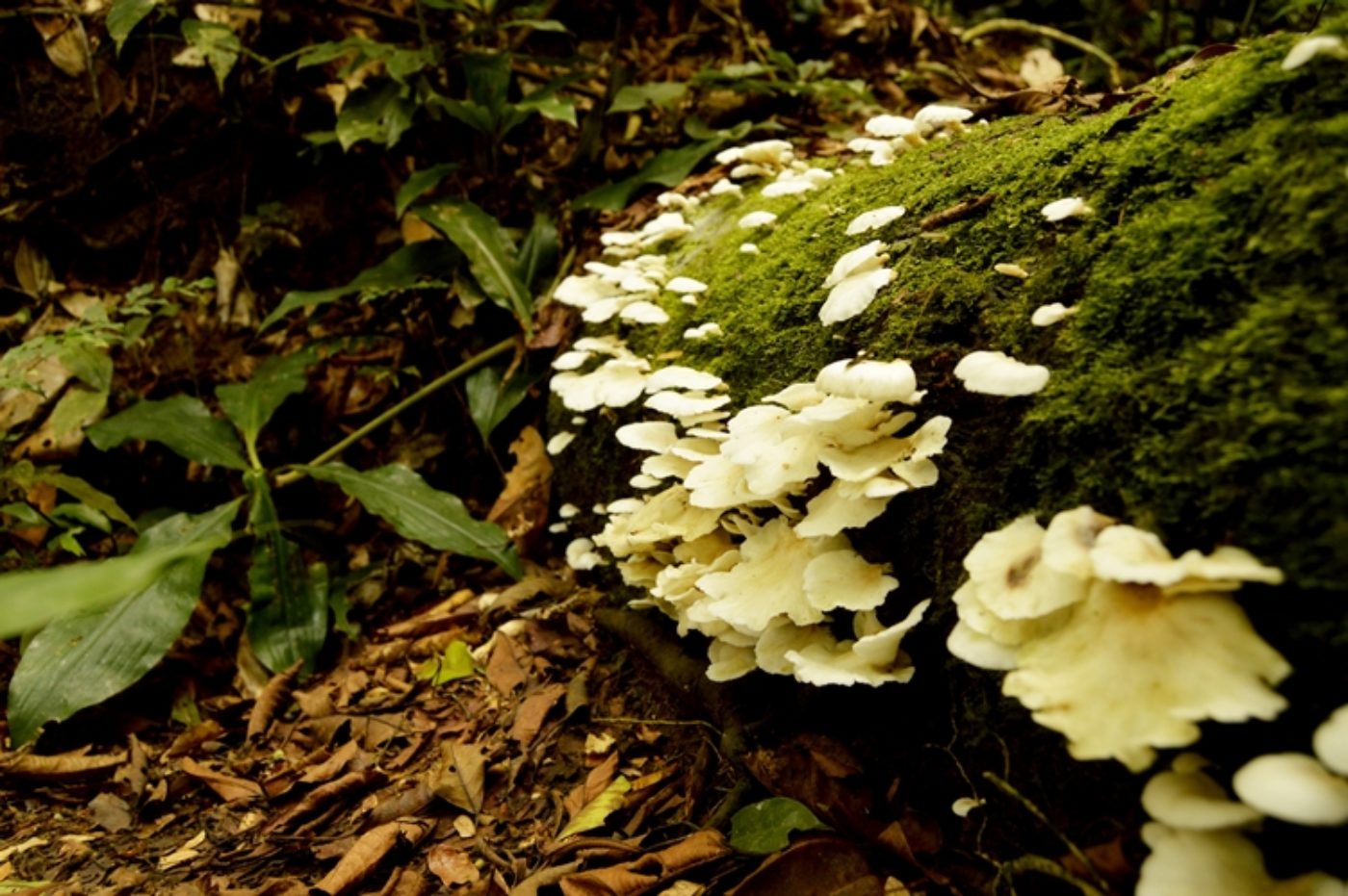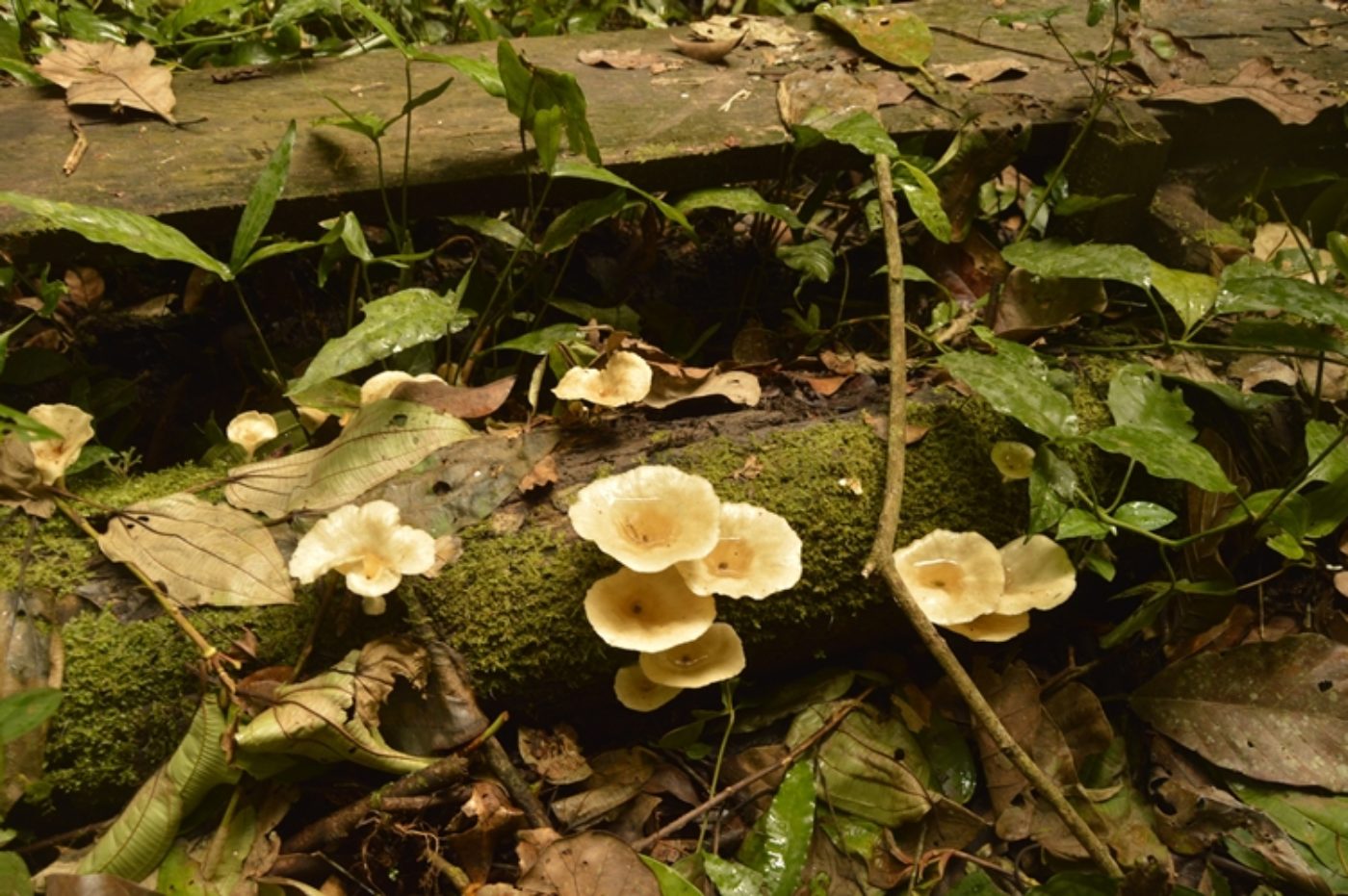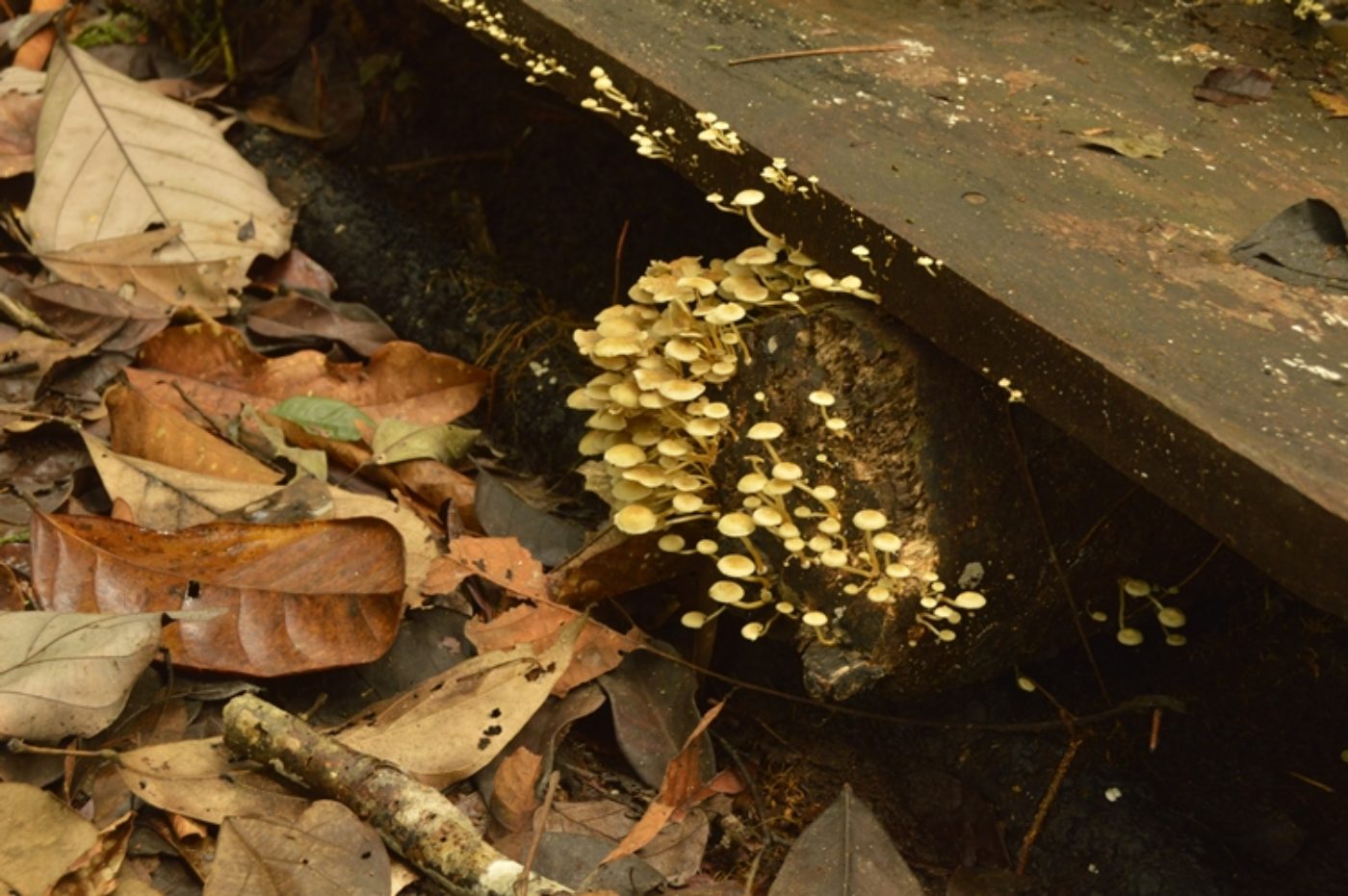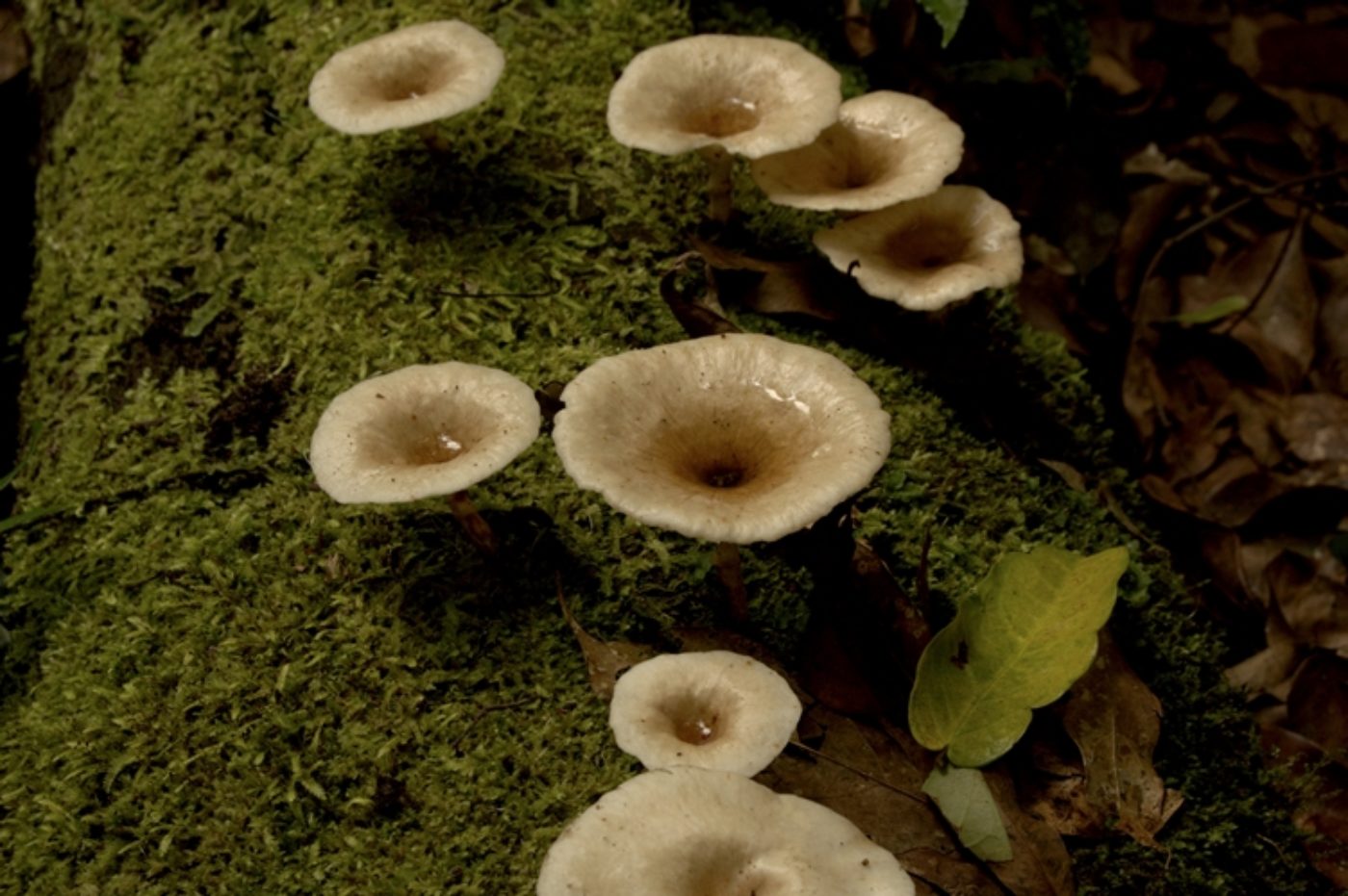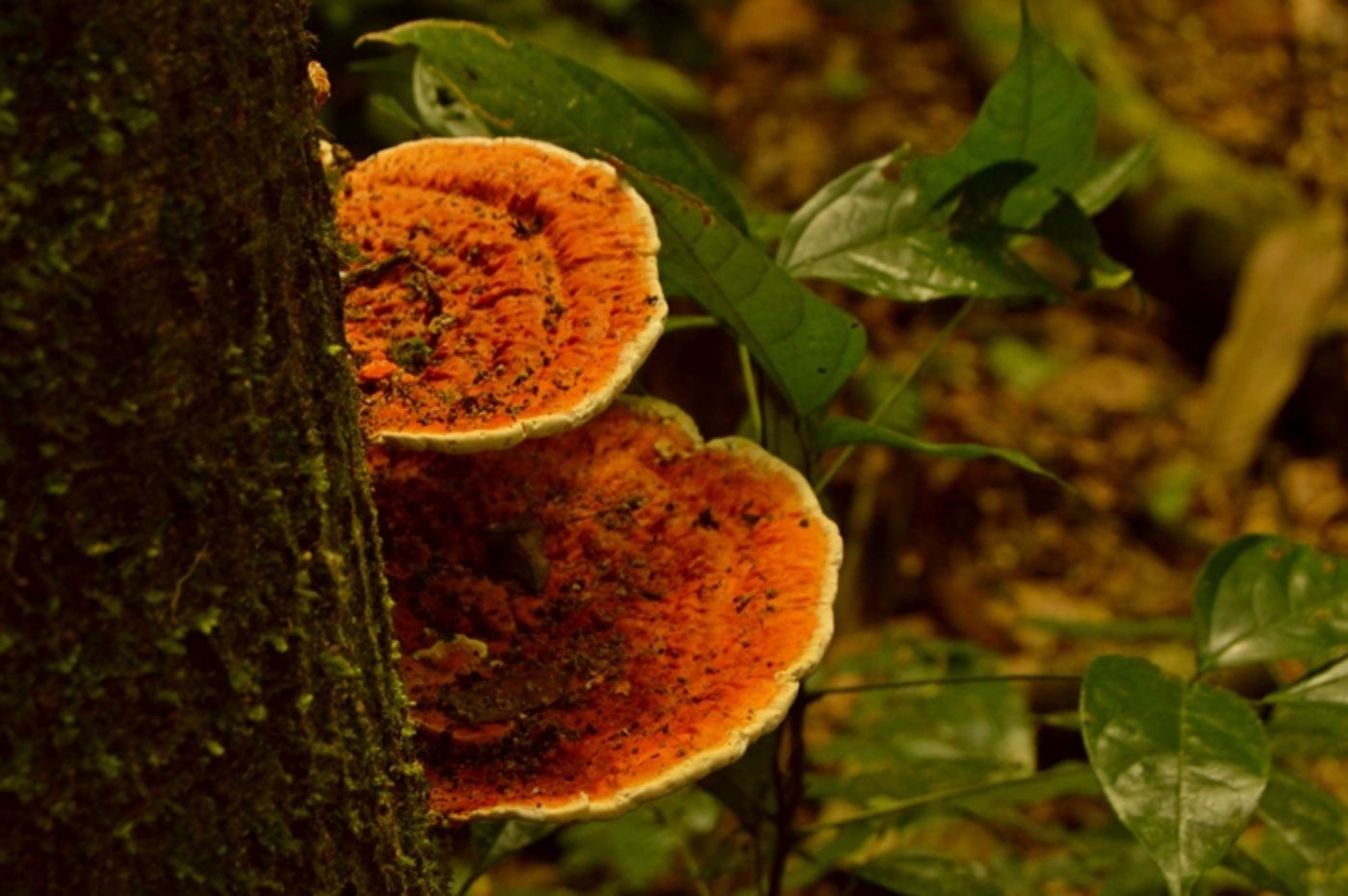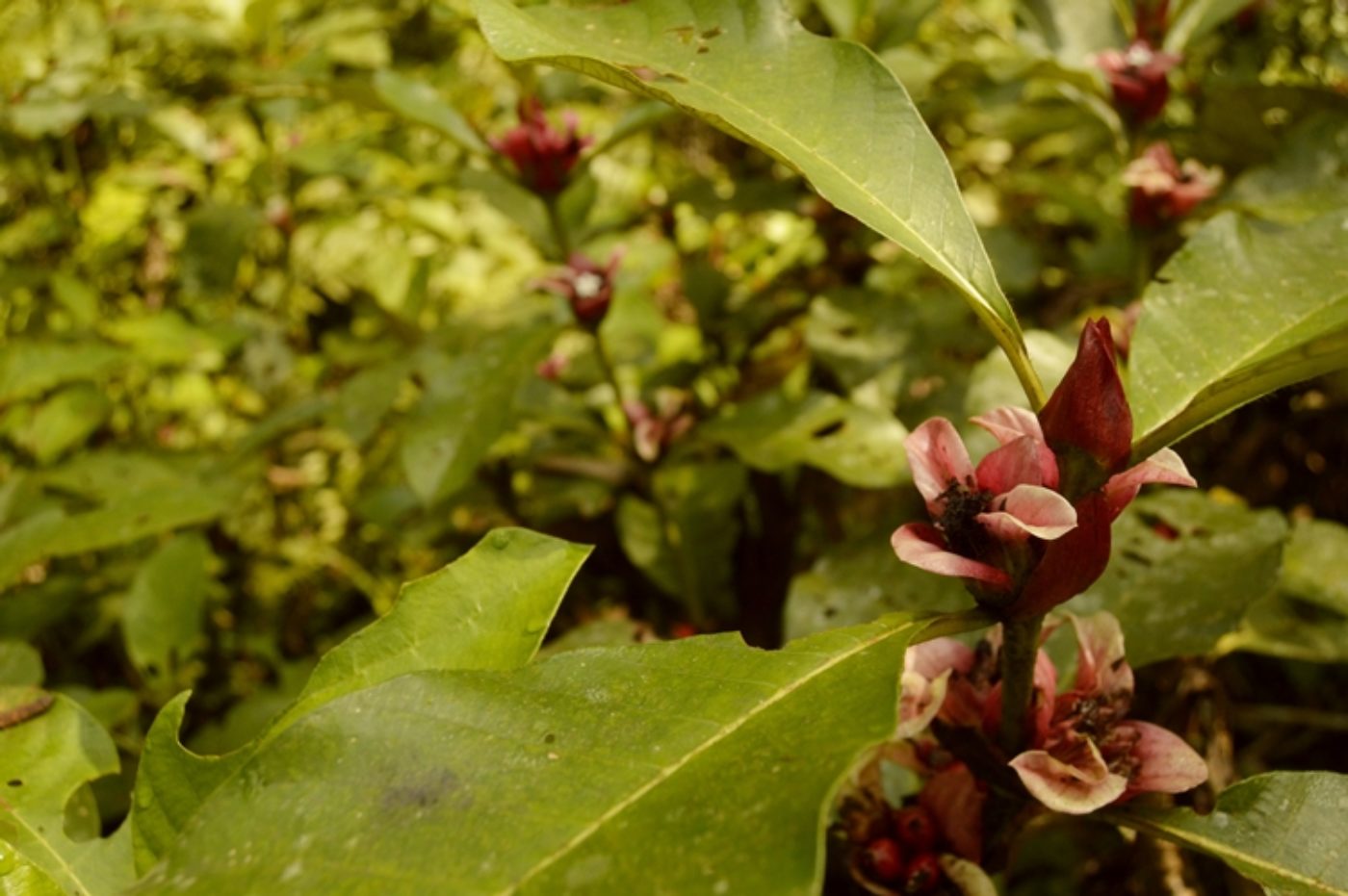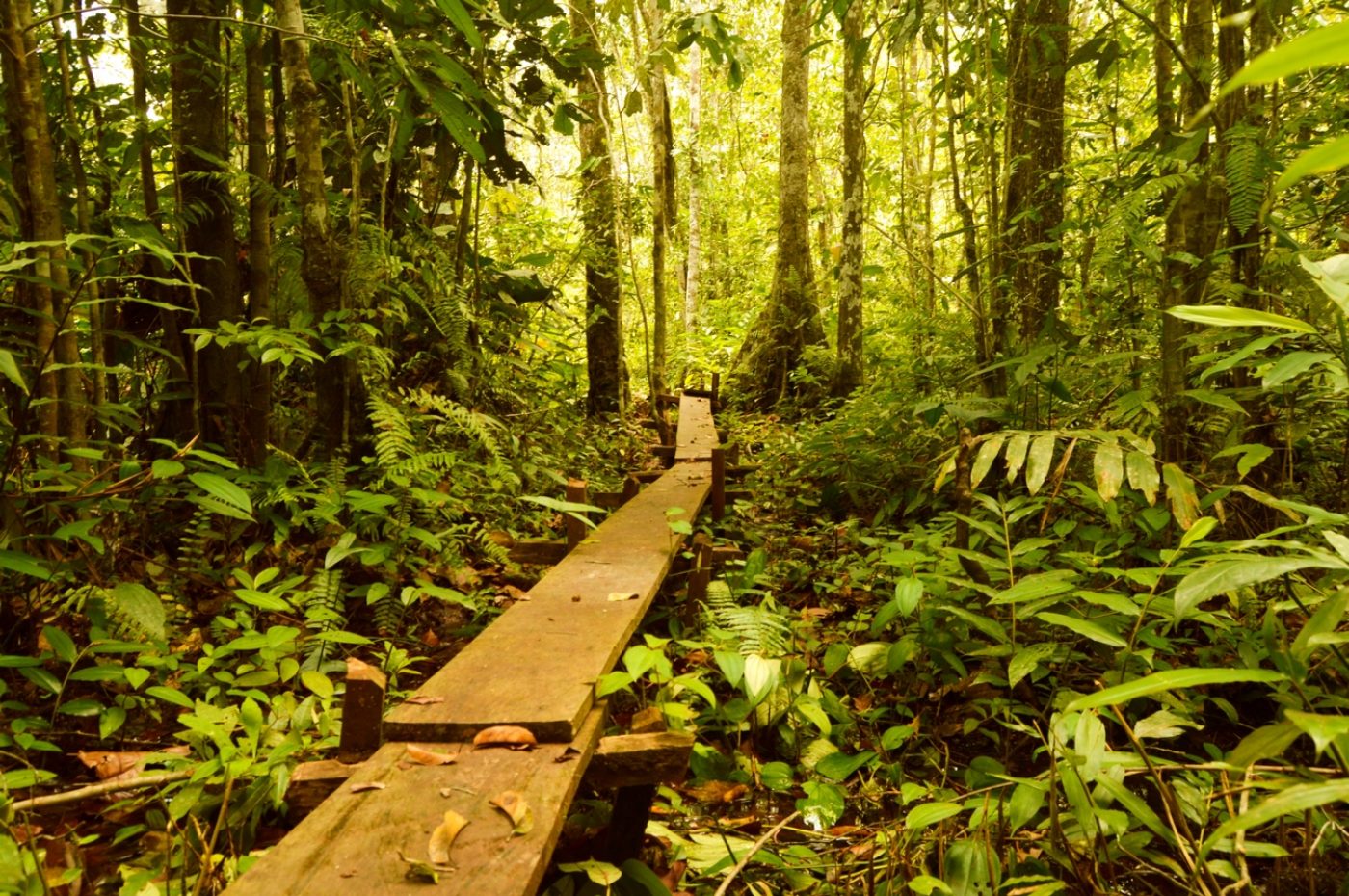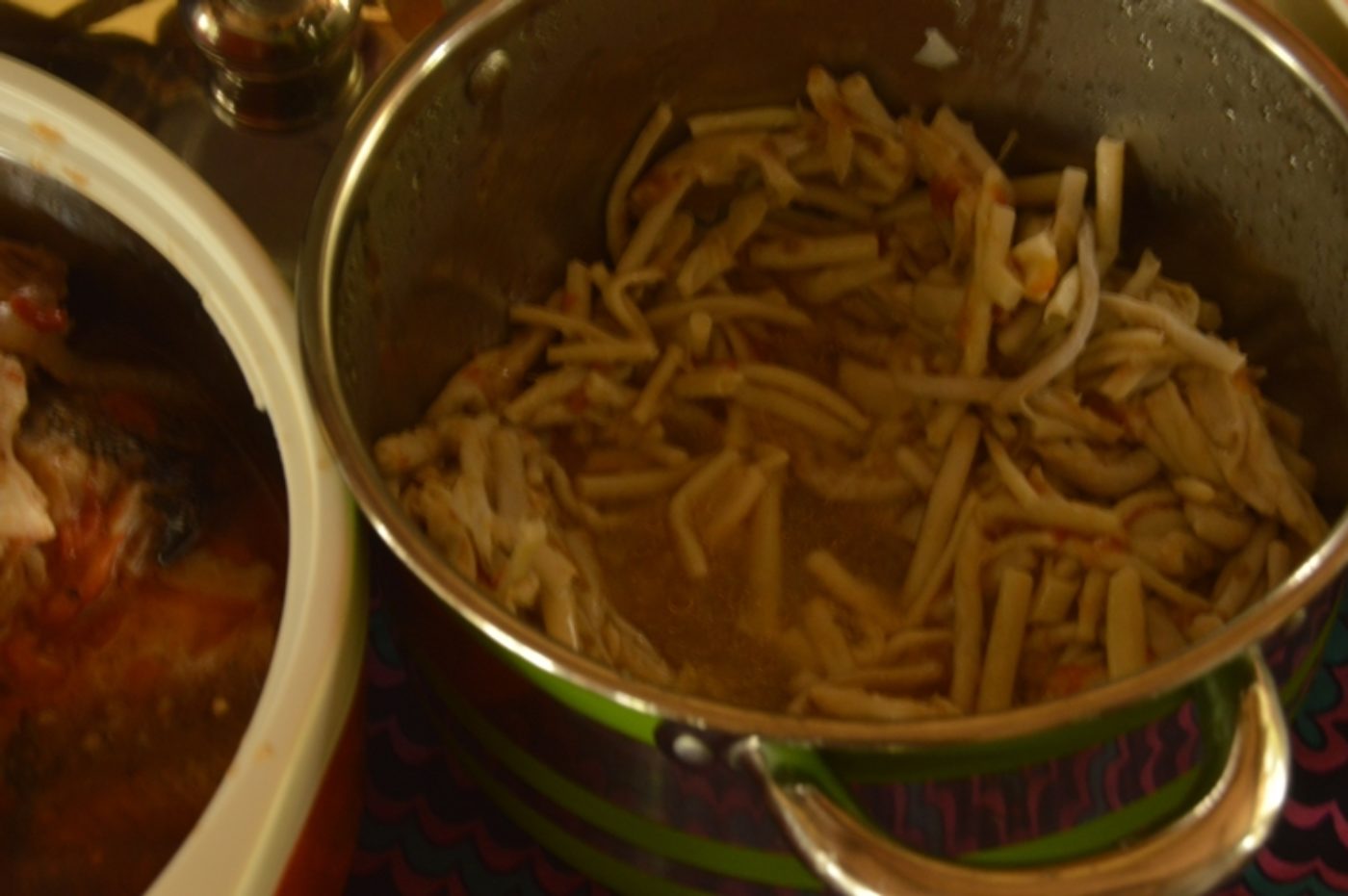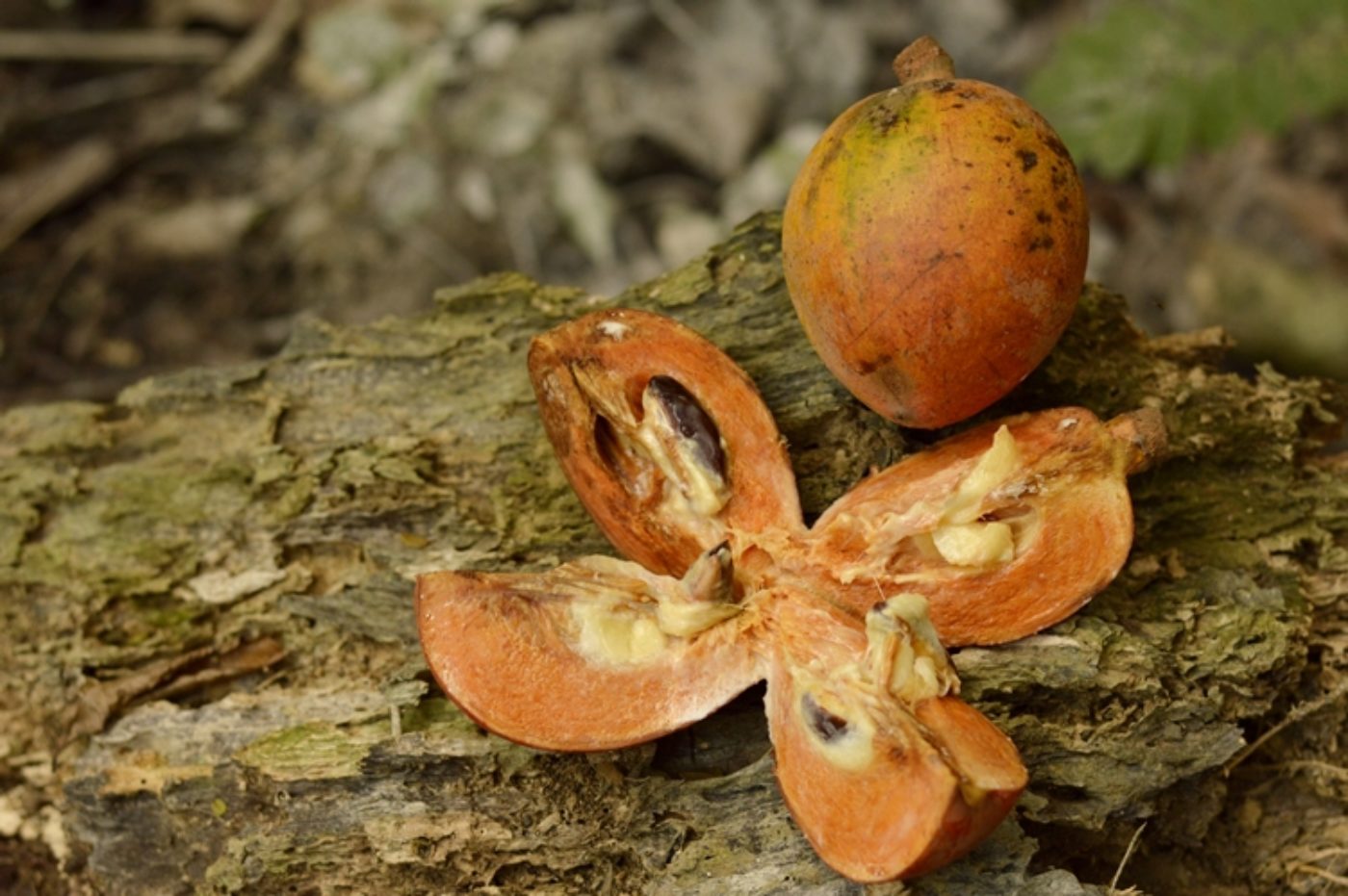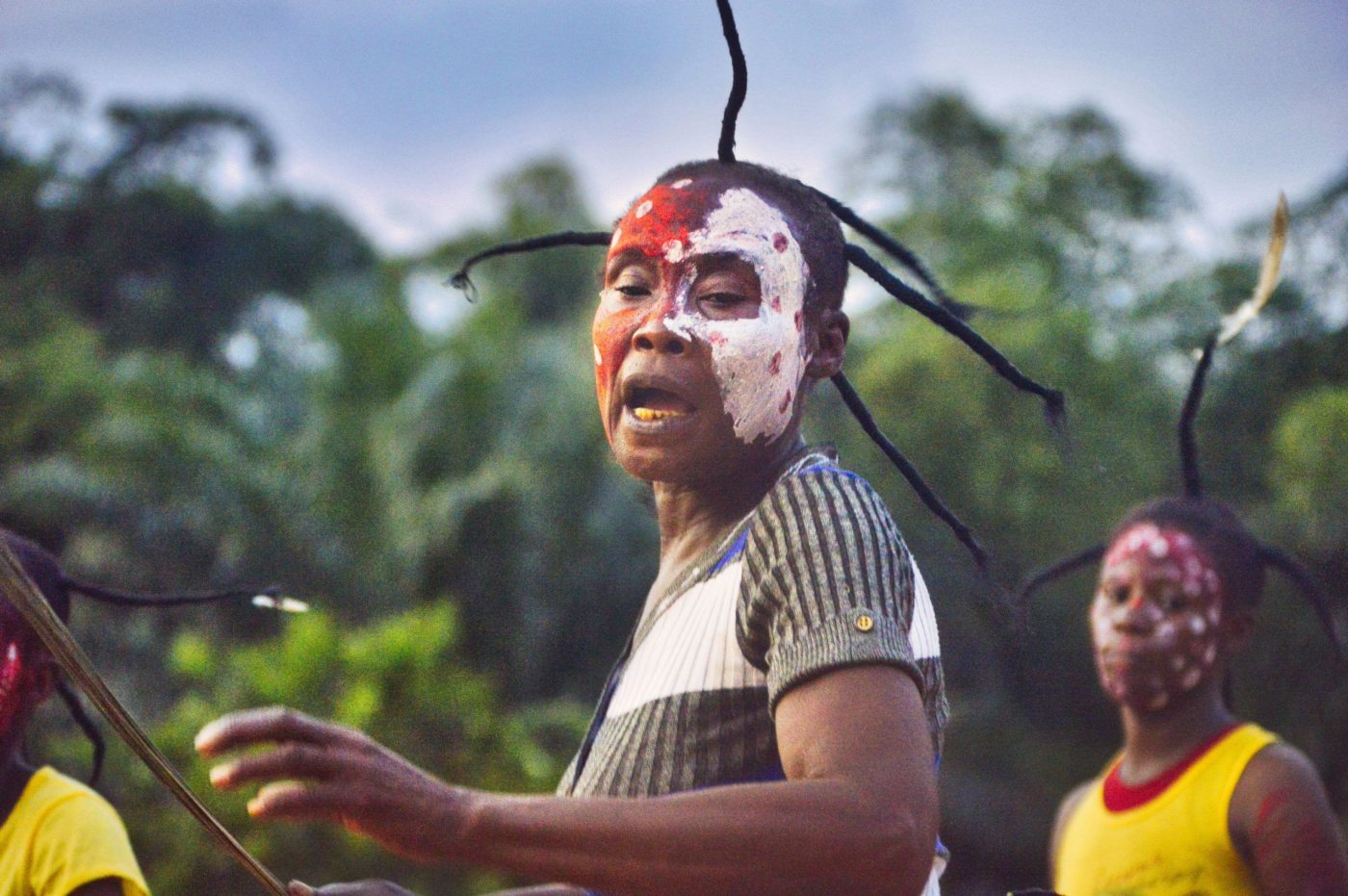If you are only visiting the Park for a short time, a popular recommendation is to start in Monkoto and go down Luilaka River a few kilometers downstream to the Lokofa patrol post, which can be reached by canoe after 45 minutes.
From Lokofa you can then hike 11 km to the Bekalikali “baï”. A baï is a clearing in the dense forest, where animals feed on mineral salts in the soil and where elephants tend to take mud baths. Therefore, they are often called the elephant bath baïs.
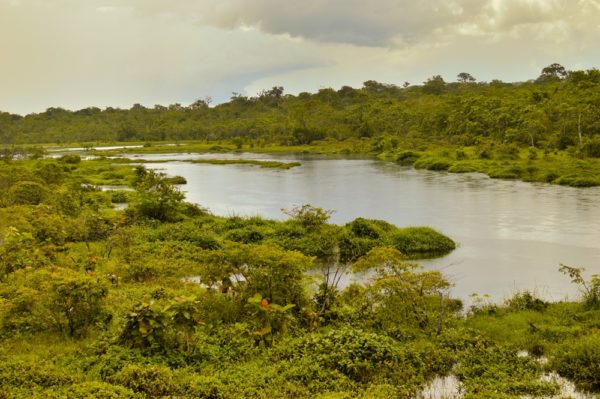
View of the Bekalikali baï from the observation platform.
In early 2019, the park partially renewed the walkways installed to facilitate researchers’ travel on the marshy parts of the route between Lokofa and Bekalikali with more stable and comfortable wooden planks.
In addition to the footbridges, a watchtower has been built on the baï itself from where animals, the vegetation, and the small Isolu river can be observed. In the long term, Bekalikali could become a starting point for a broader ecotourism initiative in the park.
To see the animals directly, it is recommendable to be on site at dusk or dawn, as daytime encounters are highly unlikely. Nevertheless, the camera traps installed at the baï prove that wildlife frequents the area. However, seeing animals is only one of the pleasures of a good three-hour hike in the forest.
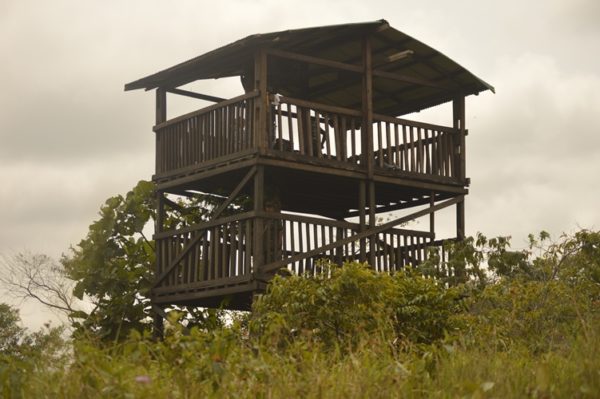
The viewing platform built for observation. It has two levels and can accommodate about ten people.
Instead of focusing on animals, especially during daytime when they cannot be seen easily, you can focus on various fruits and plants, flowers or fungi throughout the walk. In fact, some plants and fruits are consumed as much by humans as by our bonobo cousins! The hike also provides pleasant physical exercise (three hours of walking in the forest is feasible for most people) and is informative and entertaining.
One should not forget that the harvesting of forest products is prohibited in a national park. Fortunately, all the fruits and plants can be found in the surroundings of the national park as well, such as the corridor separating the Northern and Southern parts of Salonga.
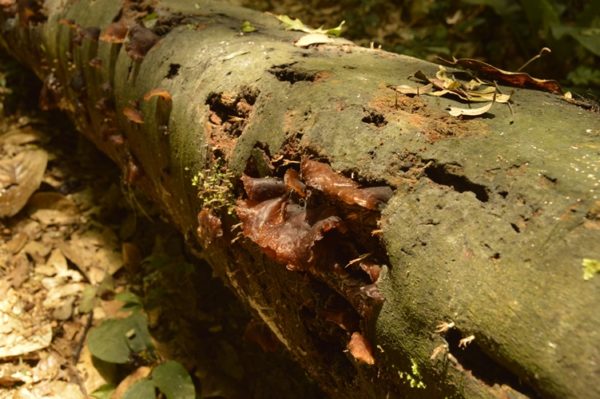
A species of edible fungus that can be seen in the Park.
